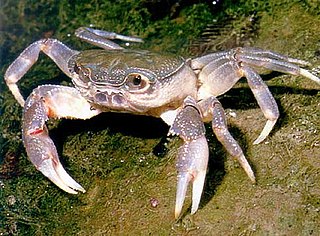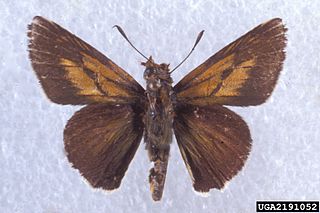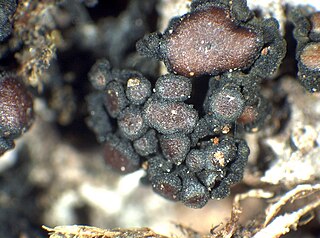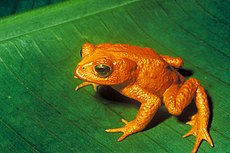This is an index of conservation topics. It is an alphabetical index of articles relating to conservation biology and conservation of the natural environment.

The conservation status of a group of organisms indicates whether the group still exists and how likely the group is to become extinct in the near future. Many factors are taken into account when assessing conservation status: not simply the number of individuals remaining, but the overall increase or decrease in the population over time, breeding success rates, and known threats. Various systems of conservation status are in use at international, multi-country, national and local levels, as well as for consumer use such as sustainable seafood advisory lists and certification. The two international systems are by the International Union for Conservation of Nature (IUCN) and The Convention on International Trade in Endangered Species of Wild Fauna and Flora (CITES).

NatureServe, Inc. is a non-profit organization based in Arlington County, Virginia, US, that provides proprietary wildlife conservation-related data, tools, and services to private and government clients, partner organizations, and the public. NatureServe reports being "headquartered in Arlington, Virginia, with regional offices in four U.S. locations and in Canada." In calendar year 2011 they reported having 86 employees, 6 volunteers, and 15 independent officers.
In botany, an infraspecific name is the scientific name for any taxon below the rank of species, i.e. an infraspecific taxon or infraspecies. A "taxon", plural "taxa", is a group of organisms to be given a particular name. The scientific names of botanical taxa are regulated by the International Code of Nomenclature for algae, fungi, and plants (ICN). This specifies a three part name for infraspecific taxa, plus a connecting term to indicate the rank of the name. An example of such a name is Astrophytum myriostigma subvar. glabrum, the name of a subvariety of the species Astrophytum myriostigma.
GRANK, or Global Rank is a ranking of the rarity of a species, and is a useful tool in determining conservation needs. Global Ranks are derived from a consensus of various conservation data centres, natural heritage programmes, scientific experts and NatureServe.
SRANK or Subnational Rank seeks to ascertain the rarity of species within subnational boundaries.

Erigeron philadelphicus, the Philadelphia fleabane, is a species of flowering plant in the composite family (Asteraceae). Other common names include common fleabane, daisy fleabane, frost-root, marsh fleabane, poor robin's plantain, skervish, and, in the British Isles, robin's-plantain, but all of these names are shared with other species of fleabanes (Erigeron). It is native to North America and has been introduced to Eurasia.

In biology, taxonomic rank is the relative level of a group of organisms in an ancestral or hereditary hierarchy. A common system of biological classification (taxonomy) consists of species, genus, family, order, class, phylum, kingdom, and domain. While older approaches to taxonomic classification were phenomenological, forming groups on the basis of similarities in appearance, organic structure and behaviour, methods based on genetic analysis have opened the road to cladistics.

Scutellaria ovata, commonly known as the heartleaf skullcap, is a member of the mint family (Lamiaceae). Its range in the United States is from Minnesota to Florida, and from Texas to the Atlantic coast. It is also native to Mexico.

Oryctes is a genus of flowering plants in the nightshade family containing the single species Oryctes nevadensis, which is known by the common name Nevada oryctes. This rare plant is native to a small area of desert straddling the California - Nevada border, where it grows in habitat with deep sand. It is difficult to estimate its abundance because the plant is only seen in years with certain rainfall amounts and temperature ranges. This is a small annual herb growing from a taproot and producing sticky, scaly foliage, growing up to about 20 centimeters in maximum height. The leaves are 1 to 3 centimeters long, linear in shape to oval and divided into lobes, sometimes wavy along the edges. The inflorescences are umbels of a few tiny flowers each, emerging from leaf axils. The flower is purplish and rounded into an urn shape, measuring a few millimeters wide. The fruit is a spherical capsule containing several seeds. The plant typically flowers in the spring months of April, May and June.

Potamon fluviatile is a freshwater crab found in or near wooded streams, rivers and lakes in Southern Europe. It is an omnivore with broad ecological tolerances, and adults typically reach 50 mm (2 in) in size during their 10–12 year lifespan. They inhabit burrows and are aggressive, apparently outcompeting native crayfish.

The lake chubsucker is a species of freshwater fish endemic to North America, found in the Great Lakes and the Mississippi River basin, as far north as Ontario, Canada, extending south to the Gulf of Mexico. It is mainly found in lakes, ponds, and swamps, rarely in streams.
The splendid darter is a species of freshwater ray-finned fish, a darter from the subfamily Etheostomatinae, part of the family Percidae, which also contains the perches, ruffes and pikeperches. It is endemic to the Barren River system in south-central Kentucky and north-central Tennessee. This species is usually found in small rocky pools on the sides of creeks and rivers.

The gilt darter is a species of freshwater ray-finned fish, a darter from the subfamily Etheostomatinae, part of the family Percidae, which also contains the perches, ruffes and pikeperches. It can be found in a number of states in the Mississippi River drainage of the United States although it has been extirpated from some river systems in which it was at one time present, mostly due to siltation and pollution problems. Males are more colorful than females and can grow to a length of about 9 cm (3.5 in). It is a benthic fish that feeds primarily on small aquatic insect larvae. Males form territories during the breeding season in late spring and early summer. Spawning typically takes place at the upper ends of riffles with sandy and gravelly bottoms interspersed with larger cobbles. Some organisations are endeavouring to conserve populations of the gilt darter and re-introduce it to states where the fish has been extirpated but suitable habitat still exists.

Euphyes arpa, the palmetto skipper, is a butterfly of the family Hesperiidae.

Silene ovata, the Blue Ridge catchfly or ovate-leaved catchfly, is a herbaceous plant in the family Caryophyllaceae. It is a perennial plant growing up to 1.5 m tall, that has numerous white flowers, each finely fringed with a tube. It has large opposite leaves without petioles, which are 5–12 cm (2.0–4.7 in) long and taper to a long point, and 2–5 cm (0.79–1.97 in) wide.

This is a list of topics in biodiversity.
British Columbia hosts 22 species of native and introduced salmonids. This list reflects the conservation status of British Columbia salmonids with status from the B.C. Species and Ecosystems Explorer, current as of August 2023. Status definitions were taken from NatureServe.

Enchylium conglomeratum, commonly known as dotted jelly lichen, is a species of foliose lichen in the family Collemataceae. Formerly known as Collema conglomeratum, it was renamed in 2013. This lichen has a fragmented distribution across the Holarctic region, occurring in both North America and Europe.

Enchylium polycarpon, commonly known as the shaly jelly lichen, is a species of foliose lichen in the family Collemataceae. Formerly known as Collema polycarpon, it was renamed in 2013 as part of a taxonomic revision. This lichen has a widespread global distribution, occurring in various regions of North America, Europe, Africa, and Asia.
















